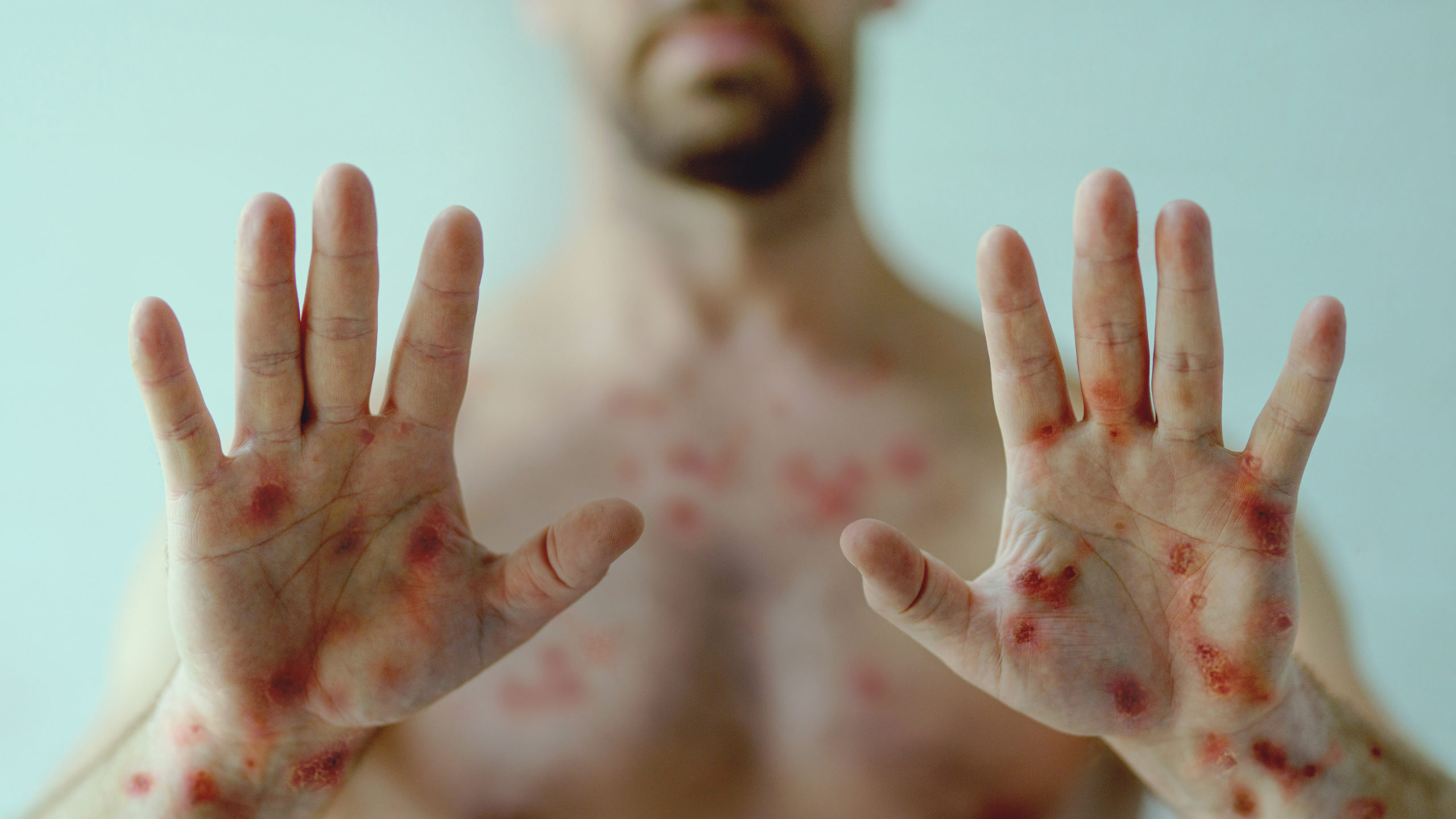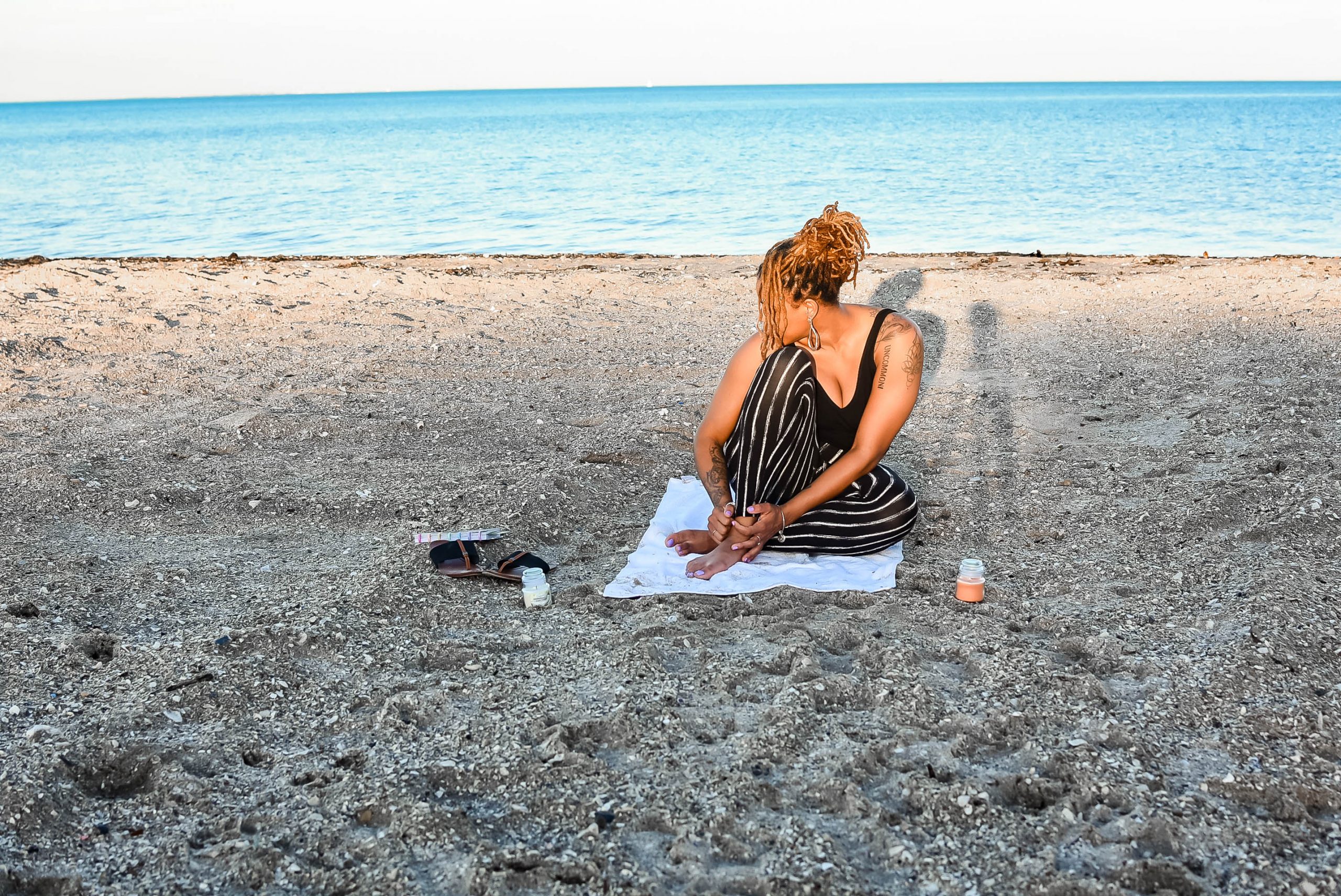Monkeypox was first identified in 1958 in Zaire, Africa, which is now the Democratic Republic of Congo. This virus was recorded to have started among captive primates. Initially, the outbreak was fairly contained among animals, but in 1970, it was identified in humans. Initially, it was recorded in West and Central Africa, but in the Spring of 2003, it was also affecting the Midwestern United States. The infected animals identified were Prairie dogs sold by a local breeder.
The spread of Monkeypox is through contact with skin lesions, contaminated bodily fluids, and droplets. The virus can also be passed from mother to fetus while the mother is infected. In humans, the symptoms average 2 to 3 weeks and can range from mild to severe. Some of the more common symptoms are skin lesions, fever, chills, sore throat, fatigue, pain in the body and head, and swollen/painful lymph nodes.
Monkeypox has an incubation period of 5 to 21 days after coming in contact with infected material. Fever is often the first sign of onset, followed by a skin rash after the fever subsides. The following common symptom is skin lesions through the body and extremities. Many often develop skin lesions in the genital areas as well. Every person infected may not develop every symptom. The intensity, duration, and set of symptoms are completely individual for each infected person.
The majority of human infections have been categorized as mild with major medical intervention unnecessary. The high-risk populations include:
People already infected with diseases needing hospitalization treatment
- People who are immunocompromised
- Pregnant or breastfeeding women
- The pediatric population, specifically children younger than 8 years old
- People who have developed skin lesions in the areas of the eyes, mouth, genitals, or anus
While there is currently no approved treatment for Monkeypox, some benefit has been shown from using Smallpox-approved treatments. Among those Smallpox-approved treatments is Tecovirimat, which is approved for the treatment of Smallpox and is given in a capsule or an injection. Vaccinia Immune Globulin IV (VIGIV) is approved for treating complications caused by the Vaccinia vaccination. Vaccinia virus was the basis for Smallpox. Cidofovir (also known as Vistide) is an antiviral treatment used for patients with AIDS and was shown to be effective against Monkeypox in animal studies. Lastly, Brincidofovir (also known as CMX001 or Tembexa), is a treatment for Smallpox in children and adults.
Since Monkeypox and Smallpox are so closely related, many who are vaccinated for Smallpox are believed to have resistance to Monkeypox. However, since the CDC declared Smallpox eradicated, many Americans have not received vaccines and are unprotected. The Monkeypox vaccines that are currently available are the ACAM2000 vaccine and the Jynneos vaccine. While it’s believed to be effective, it’s currently being given to high-risk populations as it has side effects.
The Jynneos vaccine is the preferred vaccine at this time and is given in two doses as a live virus injection into your arm. The two injections are spaced four weeks apart and once two weeks have elapsed after the second dose, then you’re considered to be fully vaccinated. The second vaccine, ACAM2000 is given by pricking the surface of the skin, essentially creating a lesion. The consequence of this is lesions can spread to other parts of the body as well as to other people who may come in contact with the affected area. This method is given in one visit and once 28 days have elapsed, you are considered fully vaccinated. ACAM2000 is contraindicated for children under 1, people who are pregnant, or those with heart disease, eye disease treated with topical steroids, AIDS/HIV, Eczema, or similar skin conditions.
Despite how scary Monkeypox can sound, the majority of Americans are not at high risk for it. Here are some ways to prevent or limit your exposure to the virus:
- Be careful not to share bedding, towels, clothes, or eating and drinking objects with someone who has lesions or possibly Monkeypox.
- Avoid close, skin-to-skin contact with anyone who may have lesions or rashes on their body.
- Wash your hands and/or use hand sanitizer often
References:
1. Capasa. (2022, August 19). Monkeypox vaccine: What you should know. Cleveland Clinic. Retrieved September 2, 2022, from https://health.clevelandclinic.org/monkeypox-vaccine/
2. Centers for Disease Control and Prevention. (2022, June 17). Treatment information for healthcare professionals. Centers for Disease Control and Prevention. Retrieved September 2, 2022, from https://www.cdc.gov/poxvirus/monkeypox/clinicians/treatment.html
3. Alshahrani, N. Z., Alzahrani, F., Alarifi, A. M., Algethami, M. R., Alhumam, M. N., Ayied, H. A. M., Awan, A. Z., Almutairi, A. F., Bamakhrama, S. A., Almushari, B. S., & Sah, R. (2022, August 11). Assessment of knowledge of monkeypox viral infection among the general population in Saudi Arabia. Pathogens (Basel, Switzerland). Retrieved September 2, 2022, from https://www.ncbi.nlm.nih.gov/pmc/articles/PMC9414752/
4. Reed, K. D., Al., E., Author AffiliationsFrom the Departments of Pathology (K.D.R.) and Dermatology (J.W.M., Belshe, S. E. F. and R. B., Others, R. A. and, Others, F. C. and, Others, K. P. and, Others, R. A. and, J. P. Thornhill and Others, & C. T. Bramante and Others. (2004, January 22). The detection of monkeypox in humans in the Western Hemisphere: Nejm. New England Journal of Medicine. Retrieved September 2, 2022, from https://www.nejm.org/doi/full/10.1056/NEJMoa032299
5. Centers for Disease Control and Prevention. (2022, July 29). How to protect yourself. Centers for Disease Control and Prevention. Retrieved September 2, 2022, from https://www.cdc.gov/poxvirus/monkeypox/prevention/protect-yourself.html
6. United States Centers for Disease Control and Prevention. JYNNEOS vaccine. https://www.cdc.gov/poxvirus/monkeypox/interim-considerations/jynneos-vaccine.html#interim (Accessed on August 10, 2022).
7. Considerations for Monkeypox Vaccination. Centers for Disease Control and Prevention. Available at: https://www.cdc.gov/poxvirus/monkeypox/considerations-for-monkeypox-vaccination.html. (Accessed on August 07, 2022).



